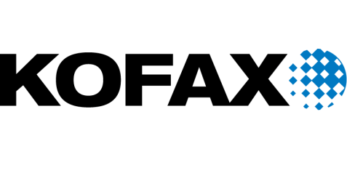Innovate with Agility and Precision.
In the dynamic context of today’s business world, companies face constantly evolving business requirements that demand flexible and adaptive technological solutions. Custom application development at SmartWave precisely addresses these needs. By crafting tailored software solutions, we commit to seamless integration within each company’s unique ecosystem, thereby maximizing operational efficiency and providing a competitive edge over generic market solutions.
At SmartWave, we master a specific range of technologies to meet our clients’ software development needs. Our low-code approach simplifies and accelerates application development while maintaining maximum flexibility for tailor-made solutions. On the front end, our expertise translates into creating elegant and intuitive user interfaces that enhance user engagement and experience. For the back end, we develop reliable and secure systems capable of handling the most demanding workloads while being ready to evolve with your business.
Adaptability
Adapt your systems seamlessly with our customized solutions that evolve at the pace of your needs.
Efficiency
Significantly increase your operational efficiency with tailor-made solutions that align perfectly with your business processes.
Competitive Advantage
Stand out distinctly from the competition with custom applications that highlight your unique value proposition.
Seamless Integration
Seamlessly integrate our custom applications into your existing IT infrastructure for synergy and a smooth transition.
Ownership
Take full control of your software solutions, with the assurance of complete adaptability and customization for future developments.
Our Technologies

Low Code
Simplification and Efficiency in Development
Low-code development is an approach to software design that minimizes the amount of manual coding required to create applications. Using a visual graphical interface, developers can assemble and configure applications faster than with traditional coding methods.
Low code speeds up the development process and enables faster responses to changing business needs. It is a particularly effective solution for creating prototypes, automating manual processes, or for businesses with limited coding resources.”
Market Speed: Accelerates development, allowing businesses to launch products and services faster.
Enhanced Efficiency: Minimizes traditional and complex software development, reducing errors and freeing up time for innovation.
Improved Flexibility: Allows for quick changes and updates, facilitating adaptation to changing business needs.
Extended Accessibility: Opens up application development to a broader audience, including those without software development skills.
Cost Reduction: Reduces development costs by minimizing development time and the need for specialized skills.

Back-end
Technical Foundation of Your Applications
Back End development involves business logic, data storage, and the interconnection of various elements of an application or website. Back End developers primarily work with servers, databases, and API applications.
In our approach, we prioritize microservices architecture where an application is built as a collection of smaller, independent services rather than a single monolithic unit. Each microservice manages a specific aspect of the application’s functionality and communicates with other services through an API.
Flexibility and Scalability: Allows for the deployment and scaling of services independently, making it easier to adapt to changing workloads and business growth.
Reliability: In a microservices architecture, if one service fails, other services can continue to function normally, increasing the resilience of the application.
Shorter Development Cycle: Teams can work independently on different microservices, which can accelerate the development cycle.
Ease of Maintenance and Updates: Facilitates targeted interventions and updates on specific services without impacting the entire application.
Optimal Resource Utilization: Optimizes the allocation of computing resources by only mobilizing the necessary services based on demand.

Front-end
The Interface of Your Digital Vision
“Front-End Development” refers to the part of web development that is responsible for what users see and interact with in a web browser. This includes designing and crafting the user interface, adapting it for various devices (such as desktop computers, tablets, and smartphones), and enhancing accessibility and user experience.
The main technologies available in the market revolve around JavaScript frameworks like Angular, Vue, and React.
Our teams, with experience in these frameworks and an understanding of their strengths and weaknesses, can assist you in your development if you have already adopted one of these technologies or help you make the right choice if you haven’t.
Optimized User Experience: Ensures a smooth and intuitive user experience (UX) tailored to both B2B (internal tool or professional-focused) and B2C (public-facing) needs.
Accessibility: Ensures that websites are fully accessible, making content available to all users regardless of their device or abilities (WCAG 2.0 Standard).
Adaptability: Adapts websites to various devices and screen resolutions, providing a consistent and high-quality user experience across all platforms.
Performance: Optimizes website performance, reducing page loading times for a better user experience.
Brand Consistency: Maintains a consistent and professional brand image throughout the website.












